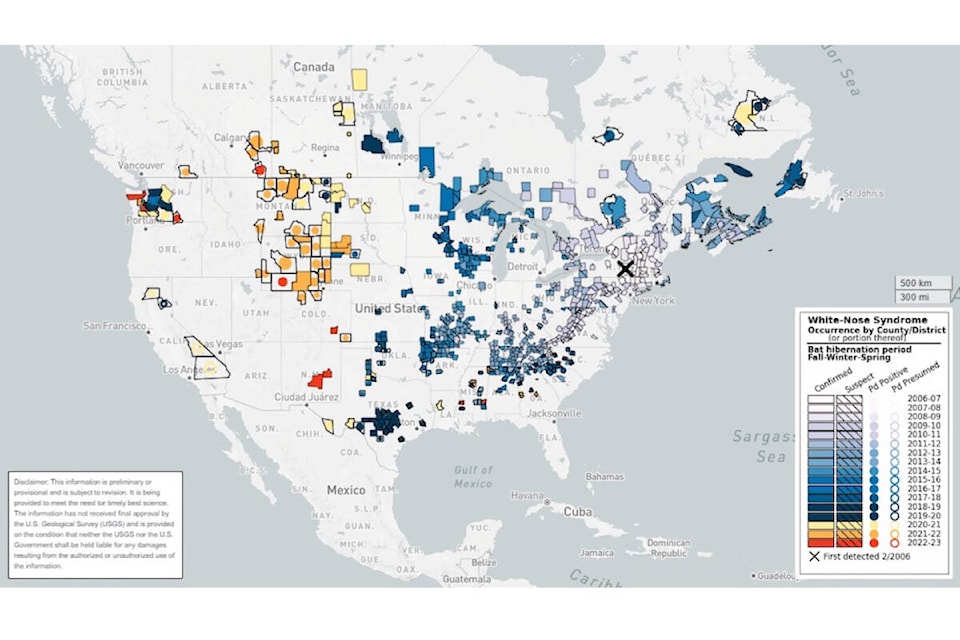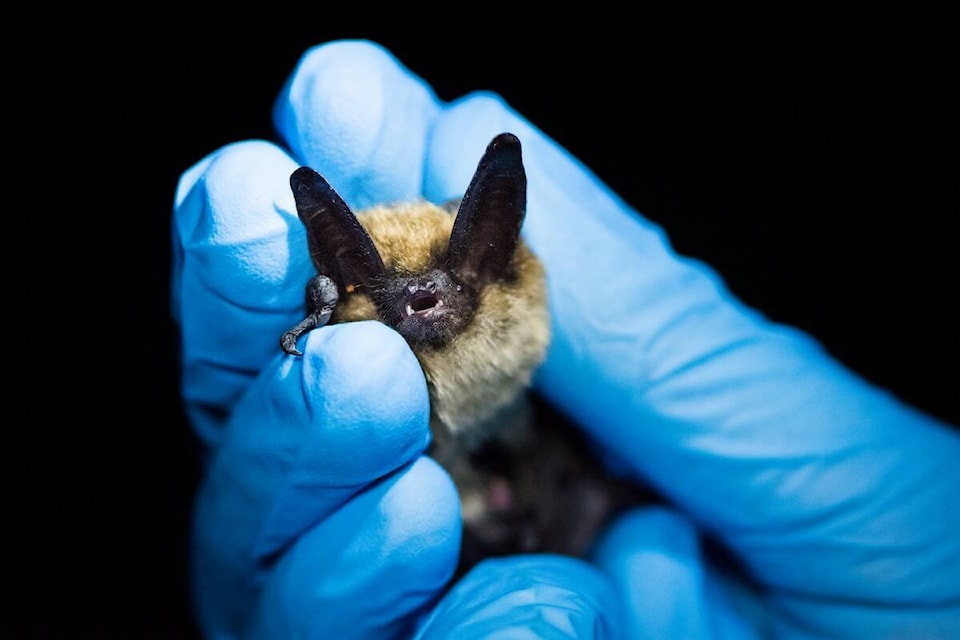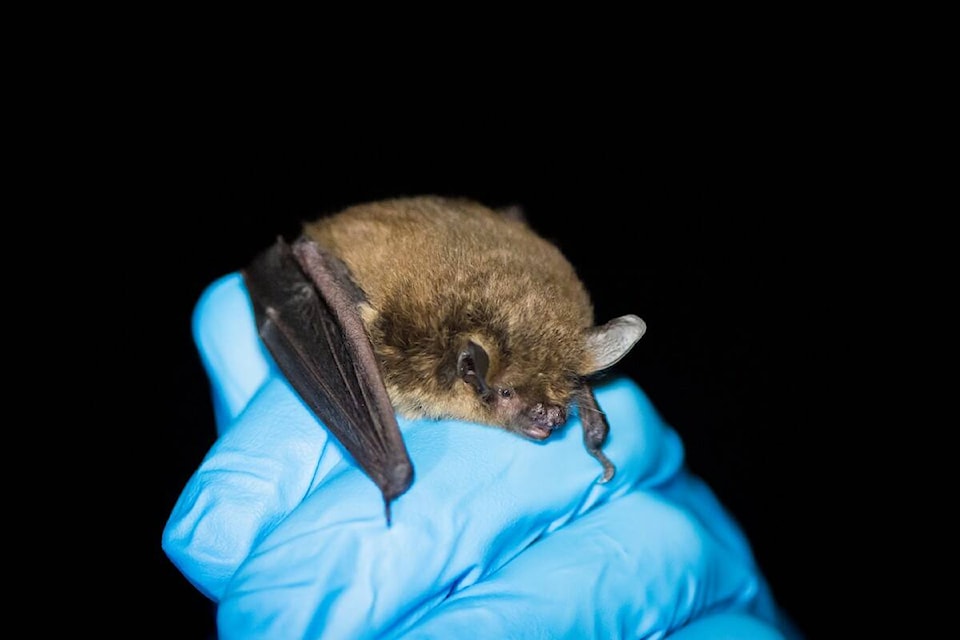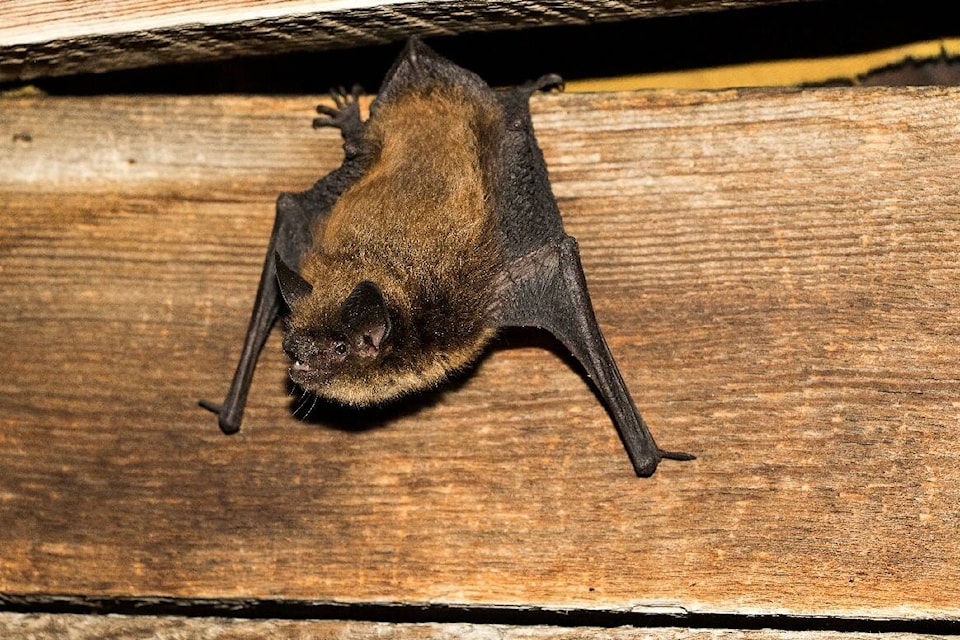A Victoria-based conservation organization needs some help with bats and is putting out a call for public assistance.
Millions of bats are dying every year as a result of white-nose syndrome — a condition caused by a fungal infection — and it is spreading to chiropteran colonies throughout North America.
Though it has not yet been detected on Vancouver Island, it does seem to be closing in. The fungus was found in Grand Forks, B.C. last year, and in Alberta the year before. Washington state has confirmed cases going back to 2016.

So, the Habitat Acquisition Trust (HAT) wants to keep a close watch on Island bats for any evidence of the syndrome or the fungus that causes it.
“Right now the main thing that will help us determine this is public reports,” HAT’s Julianna Laposa-Wilde said.
It is the best method the organization currently has to improve researchers’ understanding of what kinds of bats are affected and how the fungus is spreading, she said.
HAT is asking people to submit any reports of bat activity, pictures of bats, or any dead bat specimens that are found before May 31.
There are 15 species of bat on the Island. Laposa-Wilde wants reports on them all, but she is especially concerned about the little brown myotis and northern myotis, both of which hibernate on the Island during the winter and are now listed as endangered because of the impact of white-nose.

The relentless march of white-nose
White-nose syndrome was first detected in New York state in 2006, and has since advanced westward at an alarming pace, causing the death of millions of hibernating bats each year.
“It’s been pretty rapidly spreading across the continent,” said Kyle Nelson, an environmental science graduate student from the University of Victoria with extensive experience studying bat migrations and white-nose syndrome.
It is not the fungus itself that kills the bats, but what it leads to.
As the fungus grows on a bat’s face — giving them the telltale white nose — the animals continually try to clean themselves, even during hibernation when it is important to conserve energy.
This begins to wear down fat reserves.
“The consequences — if it’s a long, harsh winter especially — the bats will come to starve and die,” Nelson said.
It is widely thought the fungus first arrived in North America from Europe on the clothes and shoes of people. This is still a source of spread, but at this point migrating bats are also bringing the fungus westward.
The endangered myotis bats on Vancouver Island generally hibernate in the winter in caves, mines and rock crevices, but can roost in a variety of places including trees, buildings and purpose-built bat-boxes.
Nelson primarily studies silver-haired bats, which are not thought to be affected by white-nose but can still carry it from place to place, contaminating roosts that are also used by the little brown myotis bats.
The silver-haired bats also migrate much further than the little myotis bats, which do move around, only much more regionally.
Nelson is now in Colorado working with other types of little brown bats impacted by white-nosed syndrome.

He said studies are underway looking at treatments for white-nose including a probiotic to boost immunity as well as a potential vaccine. Nelson did some work on the vaccine project in Colorado in summer 2023.
For people interested in helping the bats on Vancouver Island, both Nelson and Laposa-Wilde say the best thing to do is report bat sightings, help with counts and turn in any specimens.
“One of our biggest challenges is just knowing where they are,” Nelson said.
For those people who have roosts on their property, or regularly monitor roosts, Laposa-Wilde said it is also helpful to know when the bats come back from hibernation in the spring.
“We try to get people with bat roosts to record this every year so we can notice any kind of changes that are occurring throughout the years,” she said.
Laposa-Wilde cautions people against getting too close to a live bat — bats can carry rabies — but instead try to snap a photo. And if people find a dead bat, it is important to wear gloves when picking up the specimen.
Both Nelson and Laposa-Wilde also encouraged people to help with the annual bat counts organized four times throughout the summer, first counting bats returning to roosts, and then again after maternity season.
“Annual counts are one of the best ways that we have of knowing how populations are doing,” Nelson said. “People can volunteer to set up a chair for a roost and count some bats coming out of it.
“I think it’s a fairly fun social event.”
More information about how to submit bat samples and photos can be found at bcbats.ca.
READ MORE: Bat fungus that causes white nose syndrome detected in B.C.



